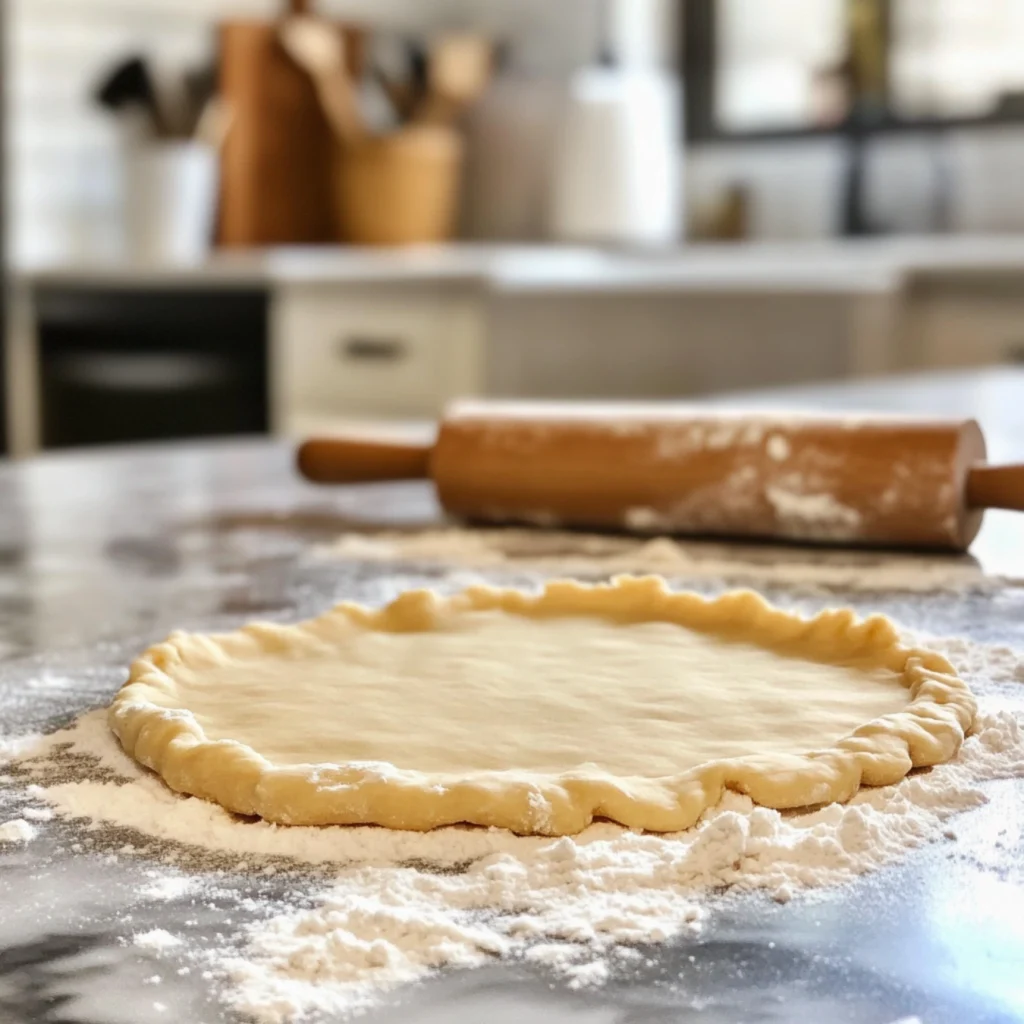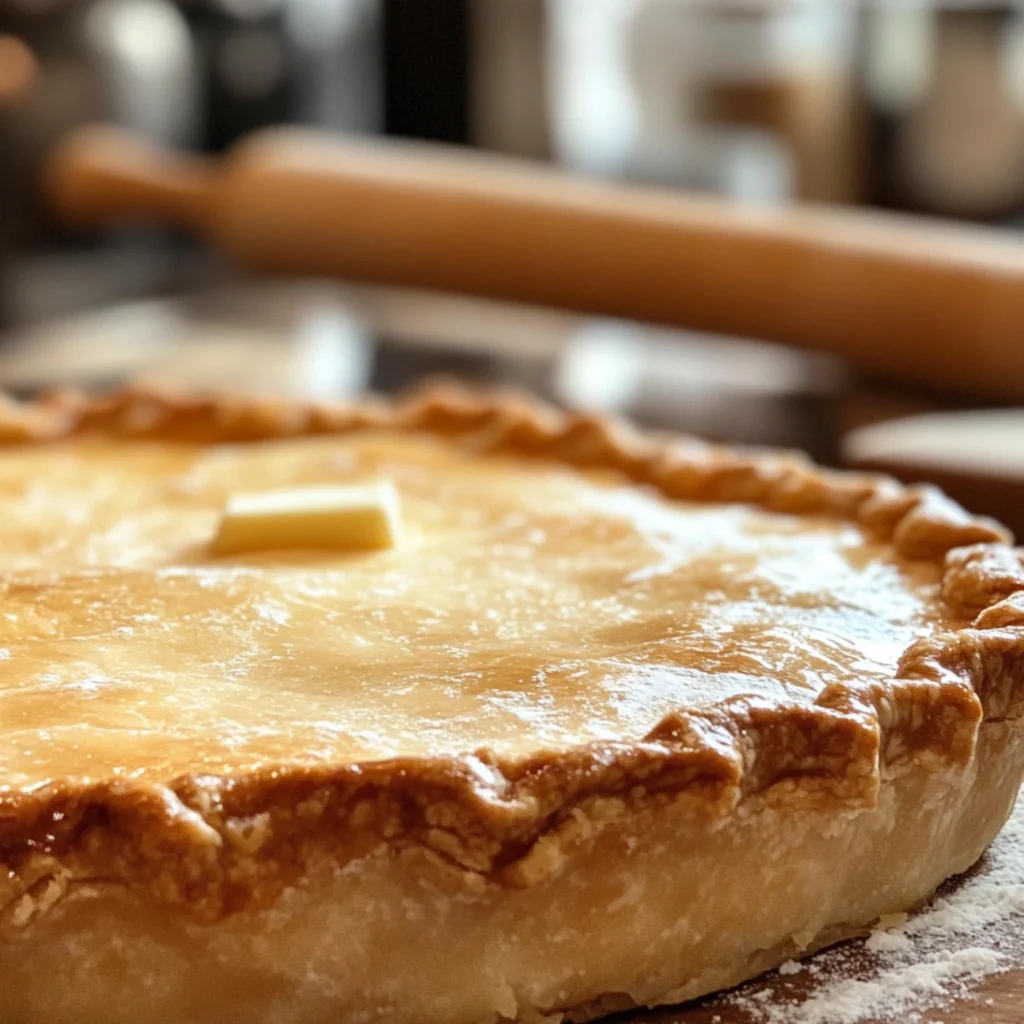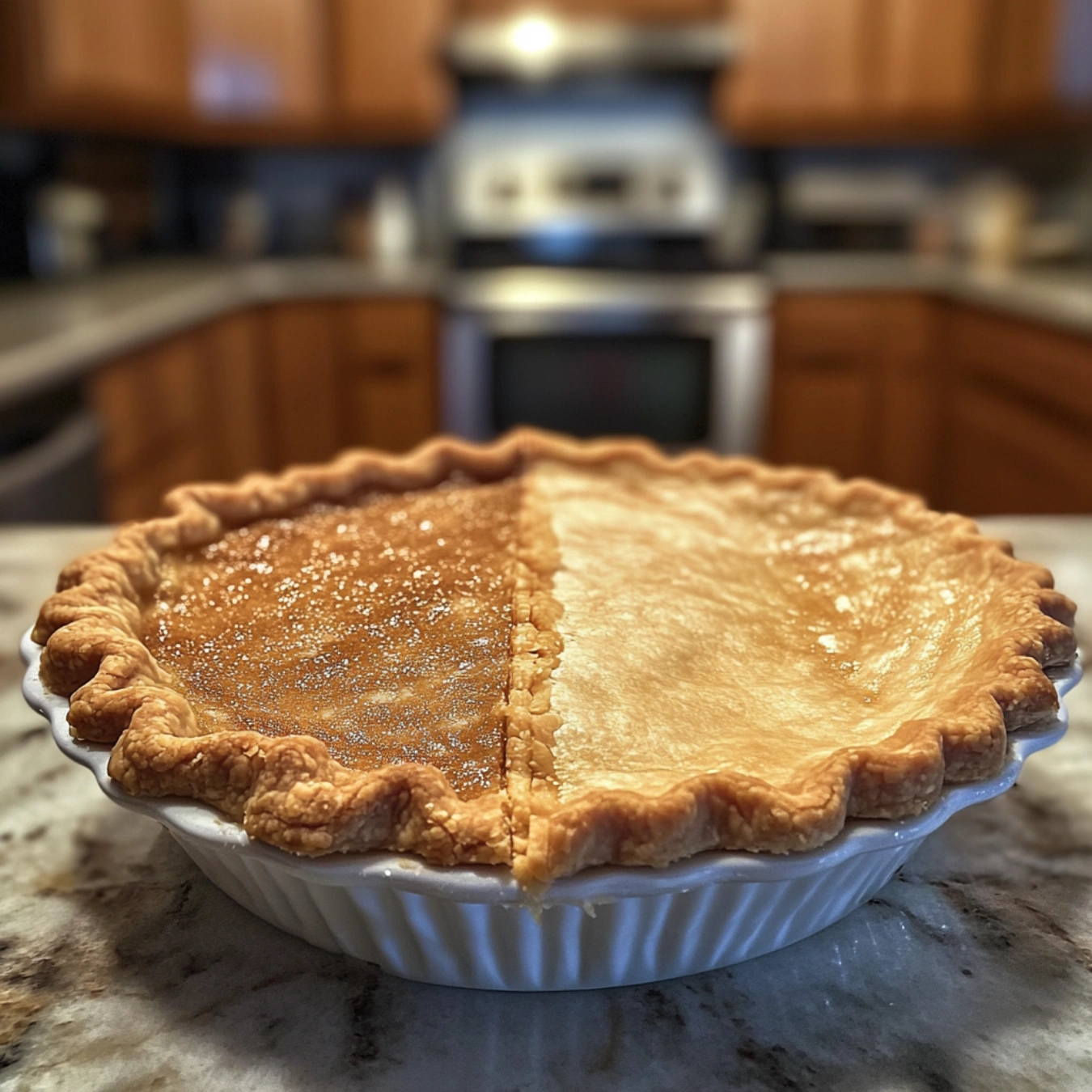Although pie dough is flaky, soft, and flavorful, one of the most hotly contested culinary questions still is: Is pie crust better with butter or Crisco? Different characteristics of both fats influence the texture, taste, and handling ease in pie dough.
While some bakers like Crisco, which produces a softer, more sensitive crust, others swear by butter and praise its rich flavor and crisp layers. But which one creates the greatest pie crust really? And is there a method to mix the fats for the best harmony?
This tutorial will explore in great detail the advantages and drawbacks of butter and Crisco, how each fat affects pie crust, and offer professional baking advice to assist you in choosing which is ideal for your next handmade pie.
Table of Contents
Understanding Pie Crust Fats
The part fat plays in pie crust.
Making pie crust calls for the most of importance from ingredients, fat. It proves:
✔ Flakiness: How effectively the layers split during baking of the crust?
✔ Tenderness: Whether the crust is mildly crispy or delicate.
✔ Flavor: The final flavor will be either rich and buttery (or neutral).
A airy, flaky texture comes from steam pockets created when fat melts in an oven. The kind of fat you use greatly affects the formation quality of these flaky layers.
What distinguishes Butter from Crisco?
Butter and Crisco differ mostly in their melting points and dough reaction behavior.
Butter has both fat and water, which generates steam and those desired flaky layers. Crisco, on the other hand, is 100% fat, thereby producing a softer, more supple crust free from butter’s sharpness.
Which then makes pie crust better butter or Crisco? The answer depends on your baking goals! Butter is the go-ahead if you enjoy crisp layers and strong taste. Crisco could be the preferable choice, though, if you want a softer, simpler-to-work with dough.
Let us then explore more the benefits and difficulties of utilizing butter in pie crust.
The Benefits and Drawbacks of Butter for Pie Crust
Many bakers strongly belong in the butter camp when deciding whether pie crust tastes better using butter or Crisco. Though it has limitations, butter is well-known for its delicious taste and crisp, flaky texture. Let’s investigate the advantages and disadvantages of including butter into pie dough.
Why Should Pie Crust Call for Butter?
More than just taste, butter produces a flawlessly flaky, golden-brown crust that many bakers like. This explains:
✔ Unmatched Flavor – Butter gives pie crust a rich, somewhat sweet taste that shortening lacks.
✔ Flaky Texture: Butter has water, which when cooked forms steam pockets producing light, crispy layers.
✔ Beautiful Browning: Butter’s milk solids enable the crust to oven-develop a golden-brown hue.
Butter-based crusts give fruit pies, quiches, and other classic bakes taste complexity and a pleasing crunch.
💡 Search for a perfect technique to create even flaky pie dough. Try vinegar. View Why Add Vinegar to Pie Crust. To keep learning!
Difficulties with Butter
Butter has certain challenges even if it makes great, flaky pie crusts:
✔ Melts Quickly: Because butter has a low melting point, in warm kitchens handling the dough can be challenging.
✔ Can Be Tough If Overworked: Gluten forms from too much kneading of the dough results in a firm crust.
✔ Shorter Shelf Life: Pie crust based on butter stores less than those based on Crisco.
Always use cold butter and refrigerate the dough before rolling it out if you want optimal results.
Although butter offers great taste and crispness, some bakers would rather deal with the simpler-to-work with Crisco texture. Let’s see how Crisco stacks!
a pie crust based on butter that shows clearly crisp layers and golden-brown hue.

The Benefits and Drawbacks of Crisco in Pie Crust
If you have ever battled pie dough, you could wonder: Is pie crust better made with Crisco or butter? Because Crisco produces a soft, easy-to-manage dough with a tender texture, many home bakers and experts enjoy working with it.
Why would one use Crisco in pie crust?
Popular for several pie recipes, shortening like Crisco offers various benefits.
✔ Higher Melting Point: Crisco rolls out and mixes more easily since it keeps firm longer.
✔ Tender Texture: Crisco’s 100% fat makes a delicate, melt-in-your-mouth crust unlike butter.
✔ Longer Shelf Life: Crisco-made pie crusts keep fresh more than butter-made ones.
Many bakers choose Crisco for custard pies, cream pies, and soft-crust fruit pies, when flakiness isn’t the major goal.
😉 Would like to sample a traditional Crisco crust recipe? View this Crisco Pie Crust Recipe for detailed, step-by-step directions!
Crisco’s disadvantages in Pie Crust
Crisco lacks one main quality, flavor, notwithstanding its advantages.
✔ Lacks Richness: Crisco tastes nothing like butter, hence the crust won’t have the buttery depth that bakers enjoy.
✔ Slightly Greasy: Crisco-based crusts have a softer, oilier mouthfeel according to some.
✔ Less Browning: Crisco lacks milk proteins, hence the crust won’t brown as exquisitely as one based on butter.
Some bakers use butter and Crisco for the best of both worlds to strike taste, flakiness, and tenderness in balance.
Rolling out a Crisco-based pie crust reveals its soft, delicate texture.
Whose Pie Crust Is Best?
After separately comparing butter and Crisco, it’s time to address the major question: Is pie crust better with butter or Crisco? Although each have advantages, your priorities—flavor, texture, or handling ease—will determine which of them is ideal.
Regarding a Butter & Crisco Combo?
Many bakers make their pie crusts combining butter and Crisco for the best of both worlds. This mix provides:
✔ Flaky texture from butter;
✔ Crisco’s tender, easy-to-roll dough;
✔ Rich, well-balanced taste
Perfect for everything from fruit pies to quiches, a 50/50 mix of butter to Crisco usually produces a wonderfully flaky but delicate crust.
Techniques for Perfect Pie Crust Baking
Whether you decide on butter, Crisco, or a combo, a few simple procedures will guarantee the ideal pie crust.
What makes a good pie crust great?
✔ Keep Everything Cold: Crisco or cold butter stops the fat from melting too soon, hence creating flaky layers.
✔ Use the Right Flour: Though pastry flour produces a softer crust, all-purpose flour performs best.
✔ Don’t Overwork the Dough – Overmixing generates gluten, resulting in a tough, chewy crust rather of a flaky one.
💡 Want a great filling for a butter-based crust? Try this Canned Cherry Pie Recipe for a classic fruit pie!
Pro Baker Advice on Success
✔ Pre-Chill Your Ingredients: Freeze Crisco or butter for ten minutes then use it.
✔ Use Vinegar or Vodka – A teaspoon of vinegar or vodka helps stop gluten development, therefore softening the crust.
✔ Blind Bake for Cream Pies: Pre-baking the crust helps custard-based pies not to be soggy.
✔ Brush with Egg Wash – This produces a clean finish and a lovely golden hue for the crust.
These baking techniques will enable you to get a flawlessly flaky, tasty pie crust every time regardless of the fat you decide on.

Questions About Butter vs. Crisco for Pie Crust
Many times, bakers question, Is pie crust better with Crisco or butter? Flakiness, taste, and simplicity of application will determine the response. These often asked questions should assist you in choosing which fat best suits your baking requirements.
Pie crust calls for either Crisco or Butter.
It relies on your desired crust’s character:
✔ Use butter if you like crisp, flaky layers and strong taste.
✔ Use Crisco if you seek a softer, more tender crust that rolls easily.
✔ Use both to strike a mix of taste, flakiness, and tenderness.
Try a butter-Crisco combination and modify depending on your own taste for optimum results.
Should one bake with Crisco or butter?
Given what you’re baking, both fats have benefits:
For pastries, cookies, and pie crusts where taste is everything, ✔ Butter is perfect.
✔ Crisco produces a balanced texture in many baked products; it works well for biscuits, bread, and softer pastries requiring tenderness.
For a shortcrust pastry, which fat is best?
Butter is the chosen ingredient for shortcrust pastry since it produces:
✔ Excellent golden browning;
✔ Rich, buttery taste;
✔ Flaky, crunchy texture
But in warm kitchens especially, using a little Crisco will help the dough to be more easily handled.
Is one replaceable for the other?
Indeed, though the outcomes will differ:
✔ Crisco will replace butter to produce a less flaky but more tender crust.
✔ Changing Crisco for butter will enhance taste but needs careful handling.
✔ For optimal results, experiment with a 50/50 ratio for a flaky, easily worked with crust.
Having all the answers now, you are ready to use the fat of your choosing to create the ideal pie crust!
Final Thoughts – Which One Should You Choose?
Is pie crust better with butter or Crisco then? Your baking goals will determine the response!
✔ For a flaky, delicious, golden-brown crust, choose butter.
✔ Choose Crisco for a simple, soft, supple dough that rolls easily.
✔ Combine both for the ideal of a balanced crust with best of both worlds.
Using Crisco simplifies handling pie crust if you are a novice. But butter is the best choice if you wish a bakery-style crust with great taste.
Joyful baking! 😊

